Original Author: CryptoBrand
The wave of the Web 3 ecosystem has surpassed the trillion-dollar mark, and decentralized technology is reshaping the value distribution and collaboration models of the internet.
In the Web 3 world of 2025, the core contradiction of data growth has shifted from "traffic scarcity" to "value misalignment." There are three major paradigm shifts in data-driven growth: from "attention capture" to "value co-creation," from "centralized funnels" to "distributed networks," and from "tool stacking" to "protocol layer innovation."
How to construct the integration of on-chain behavior and incentive protocols, the reconstruction of data rights + value settlement, and precise reach in the fragmented era will become the core paradigm for building the Web 3 data growth engine. We will provide a detailed interpretation of the panoramic view of the Web 3 data growth engine from the perspectives of task platforms, InfoFi, and KOL & Marketing.
As an important track in the Web 3 ecosystem, task platforms are gradually becoming the growth engine that drives community participation, resource integration, and value creation by connecting demanders and executors in a decentralized manner. They are building the forefront of acquiring traffic and distributing tasks in the Web 3 ecosystem and are evolving into on-chain refined traffic tools, cross-chain collaboration tools, and terminals for community traffic accumulation.
Looking back in mid-2025, we will examine several leading task platforms such as Galxe, TaskOn, Layer 3, and Zealy to see what focuses and advantages each has in terms of the data growth engine.
Galxe: A Full-Stack On-Chain Ecosystem from Web 3 Task Platform to InfoFi
Galxe is the largest Web 3 task platform and credential data network, with 33 million independent users, reconstructing the Web 3 growth engine through on-chain credentials. Its core product logic is to solve user identity verification issues through Galxe ID and Passport, achieving protection against witch attacks and bot defenses. The main products include Quest, Starboard, and Earndrop to realize the product growth engine.
In particular, Starboard is the core function of Galxe's focus on InfoFi this year, converting social media volume for project parties based on existing traffic.
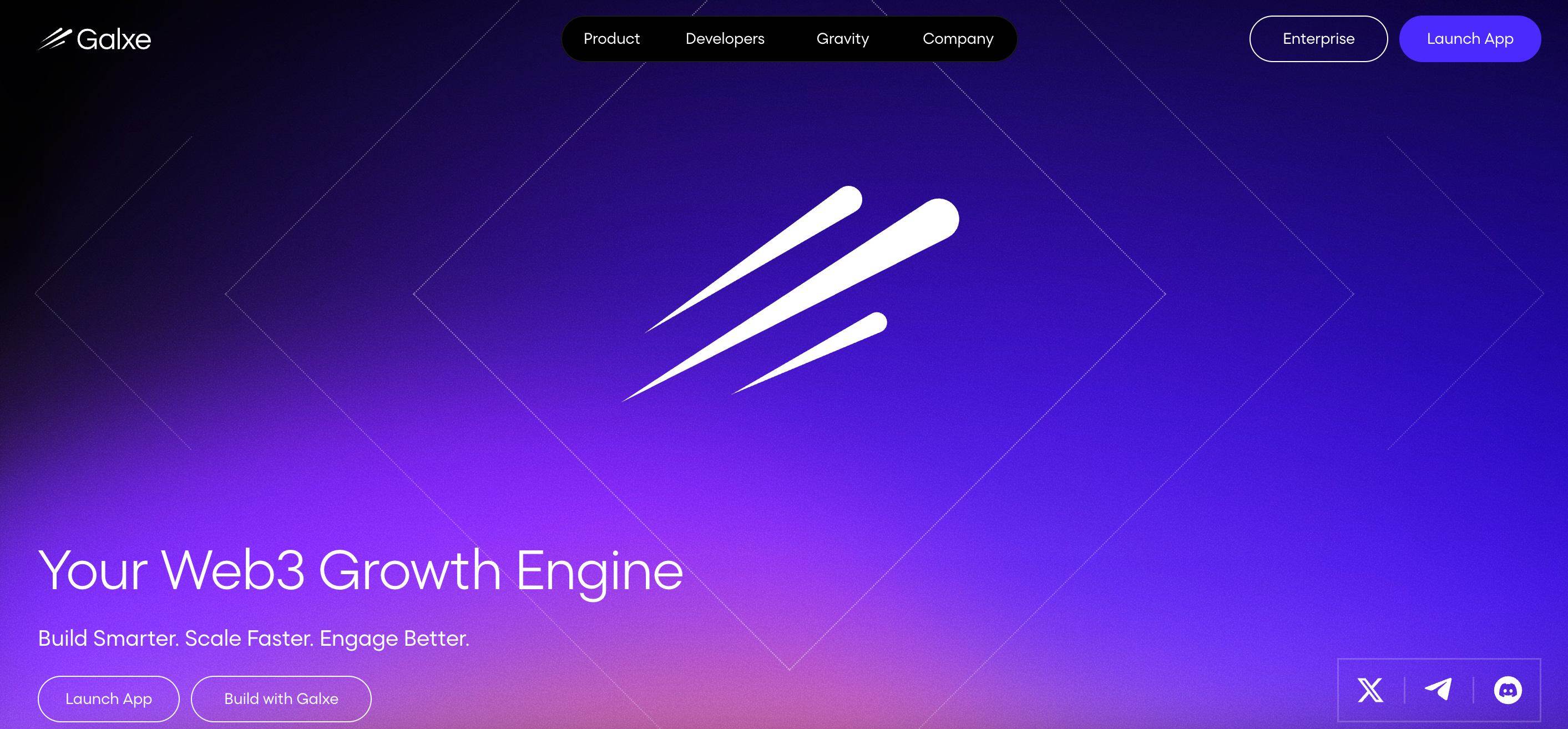
Core Products
- Product Roadmap

- Product Functions and Use Value
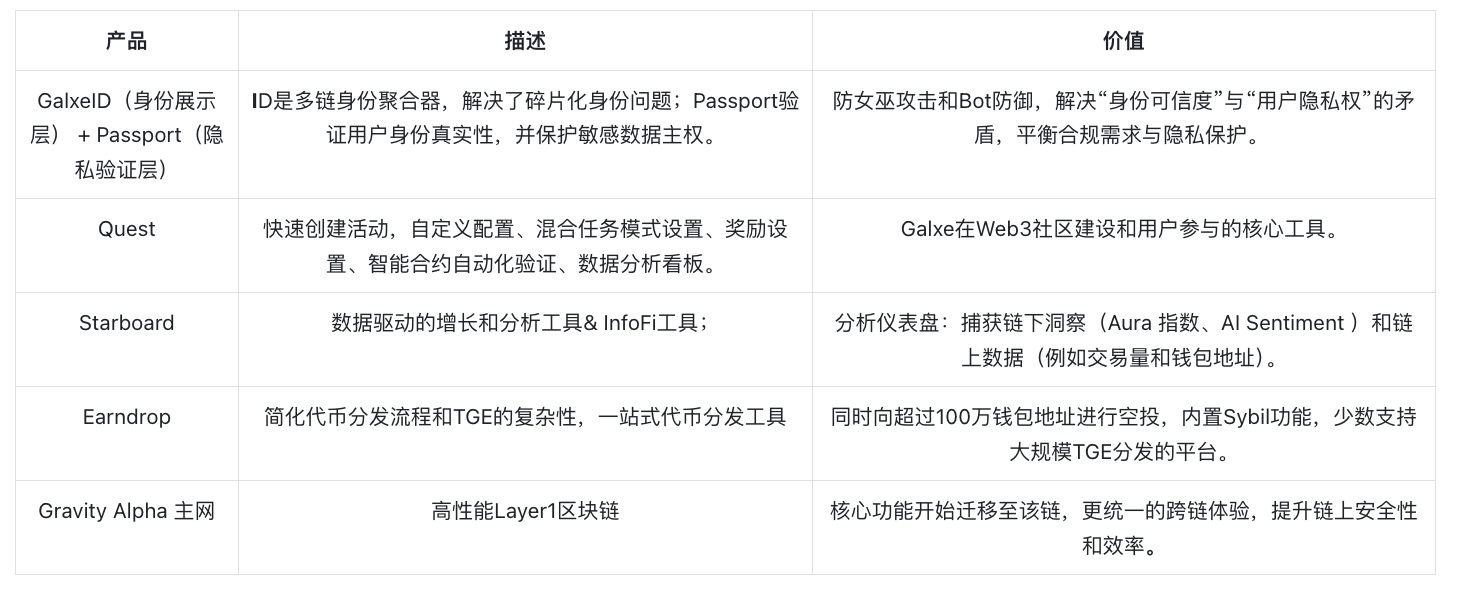
Advantages of Galxe
- Large user base;
- The dual-track design of Galxe ID + Passport can prevent witch attacks and bot defenses;
- Starboard can realize InfoFi functions;
- Earndrop simplifies the token distribution process and the complexity of TGE, achieving one-stop token distribution;
- Gravity chain optimizes cross-chain interaction efficiency and security;
Disadvantages of Galxe
- Projects and quests are cluttered, with most projects and quests lacking exposure;
- The usage cost is the highest among task platforms;
- Insufficient support for on-chain tasks; apart from SNS having automated verification, most require project parties to sort and upload the winner list for the draw;
TaskOn: An Automation-Driven, B2B2C Hub for Task Collaboration
TaskOn is the platform with the richest variety of task types and the most complete functions among task platforms. It can enhance marketing and operational efficiency through smart automation tools, helping project parties improve data and efficiency in social media growth, data analysis, community participation, and on-chain transactions. Currently, TaskOn has 18 million user addresses.
TaskOn's core products consist of four major components: Quest, Community (GTC), ChainEran, and Token Flow, configuring on-chain and off-chain tasks around community operations, user attraction, user retention, and on-chain data for customized task settings.
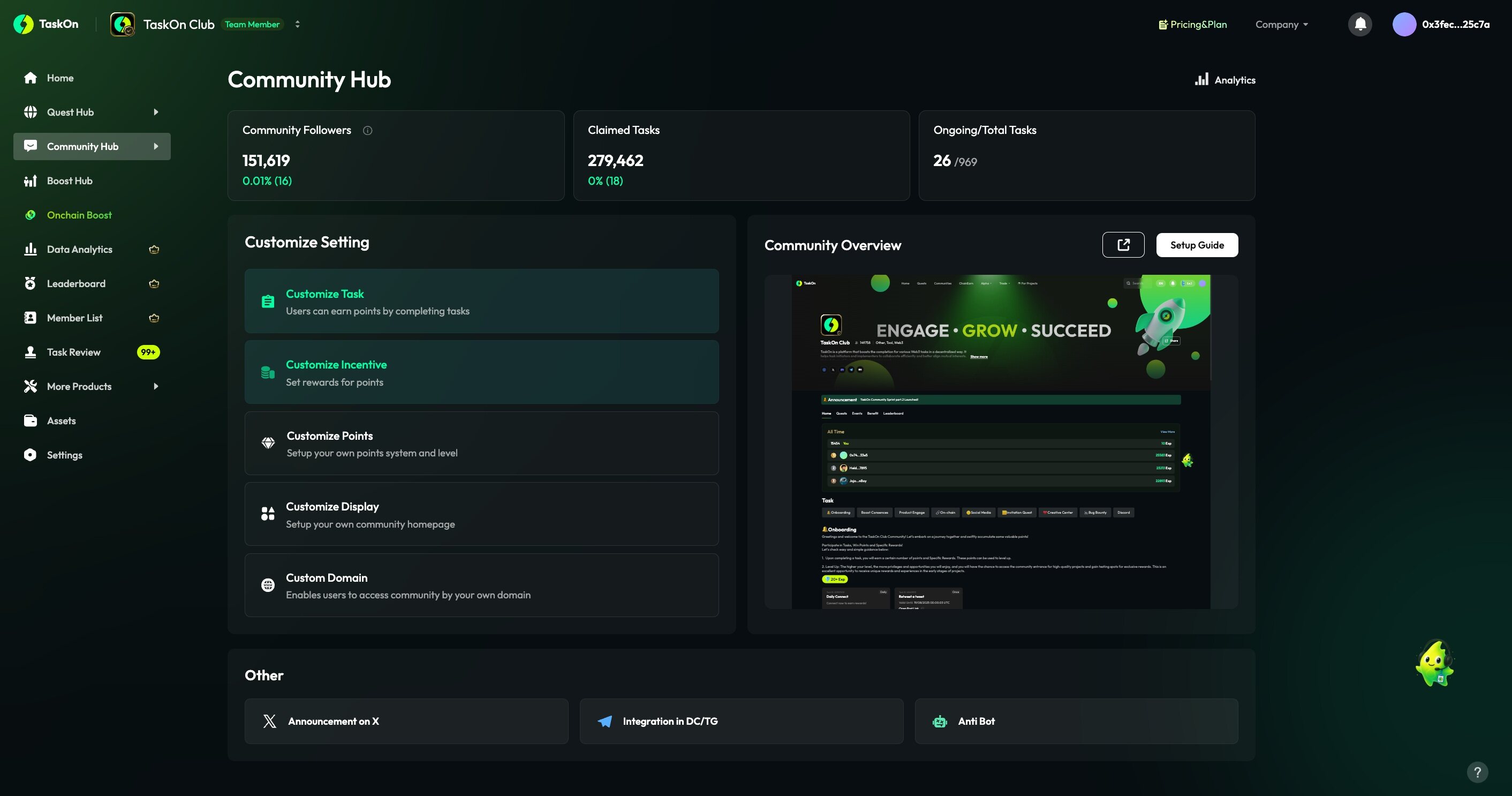
Core Products
- Product Roadmap
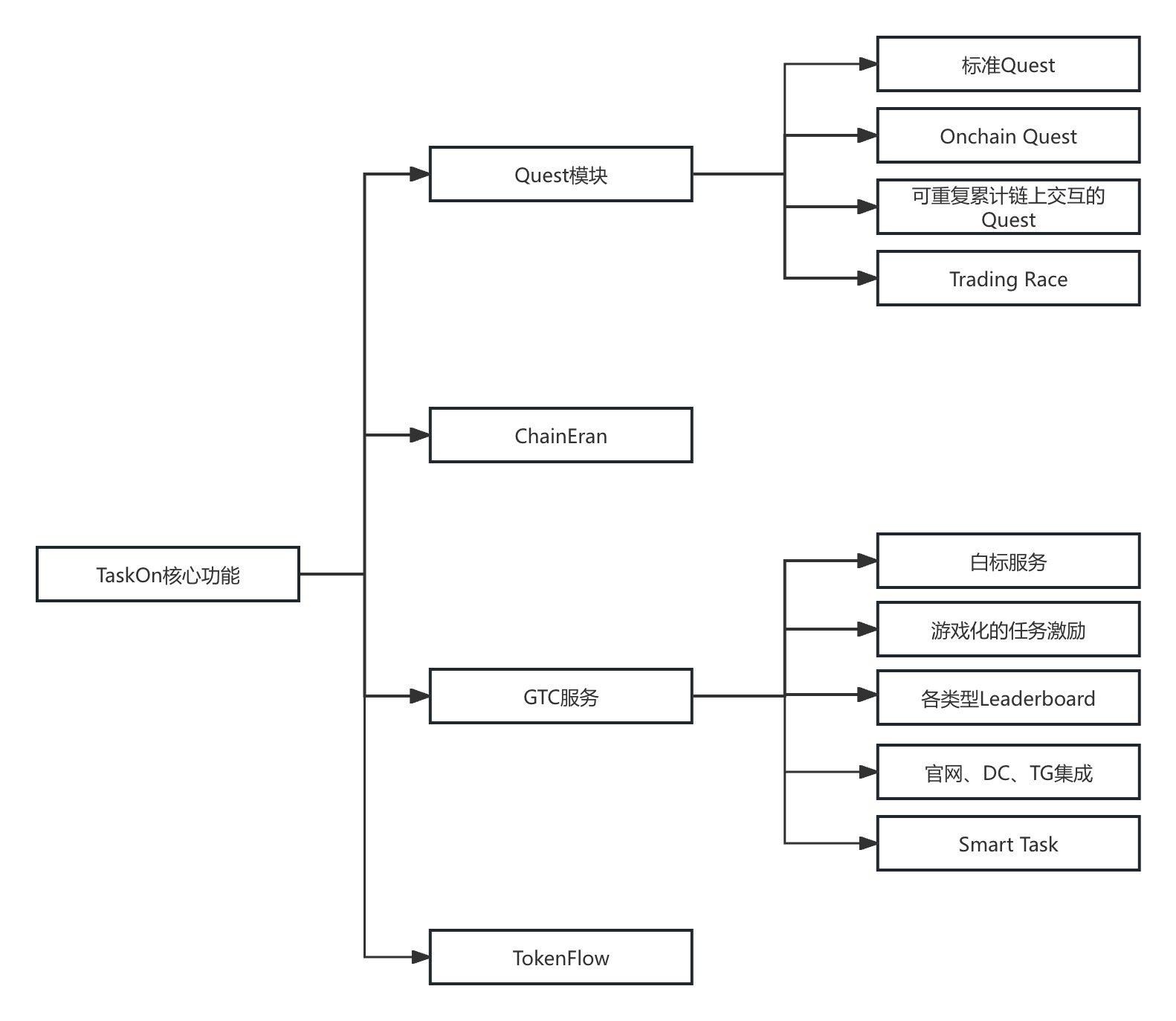
- Product Task Function Perspective
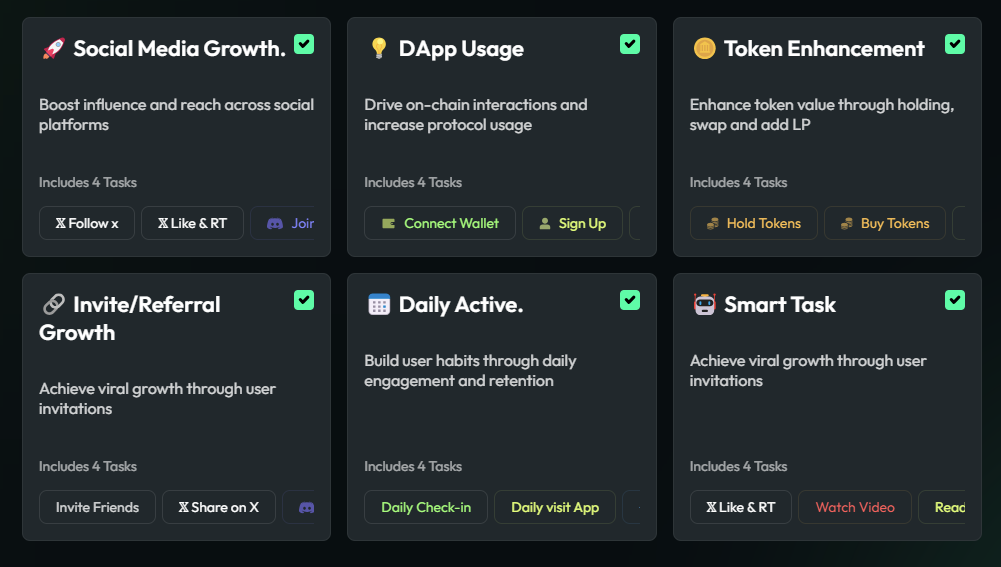
- Product Functions and Use Value
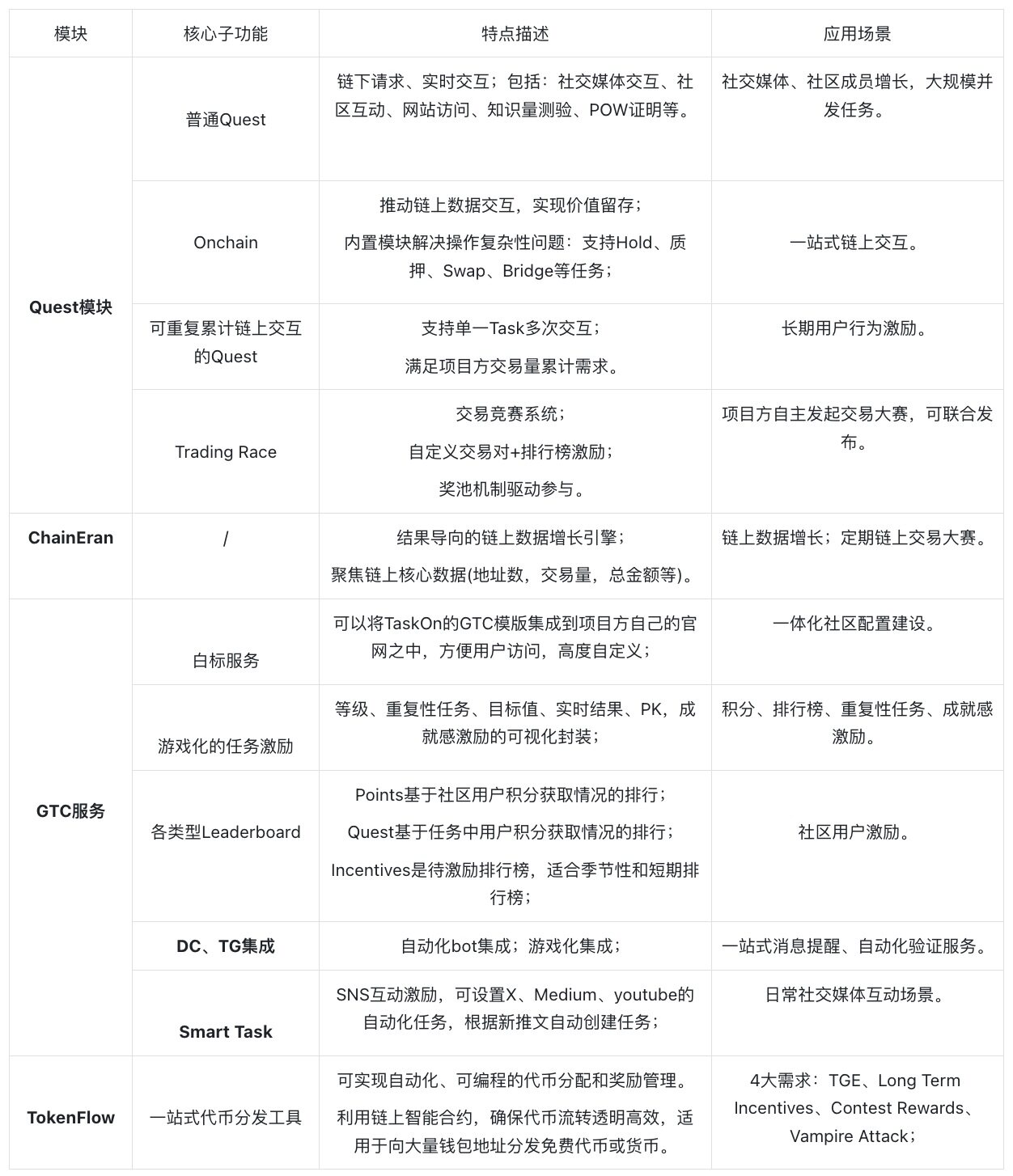
Advantages of TaskOn
- Quest is free to use, with a rich task template library and real-time automatic verification;
- White-label service: The GTC module can be integrated into the project party's official website, establishing a highly personalized user operation system;
- Automatic rewards: Saves project parties' labor and time costs;
- Self-service can be achieved throughout the site, with high customer service communication efficiency;
- C-end users can contact TaskOn for product-related issues without needing to involve the project party;
Disadvantages of TaskOn
- Page information overload: Many functional modules are complete and highly personalized, leading to a certain learning cost for users;
- The platform's points currently lack usage scenarios;
Layer 3: On-Chain Decentralized Infrastructure, Tokenization of Attention Under Aggregation Concept
Layer 3 is a Web 3 task platform focused on the "attention economy." It aggregates tasks from popular ecosystems through user education links, using CUBE to record users' full-chain identities, achieving decentralized identity management, task verification, and reward distribution. Users receive dynamic rewards upon completing tasks, with the platform focusing on on-chain traffic to attract high-quality DeFi and cross-chain bridge users.
Layer 3 currently has 250,000 monthly active users. It has driven the growth of 31 chains and over 500 protocols, covering areas such as gaming, artificial intelligence, DeFi, and NFTs.
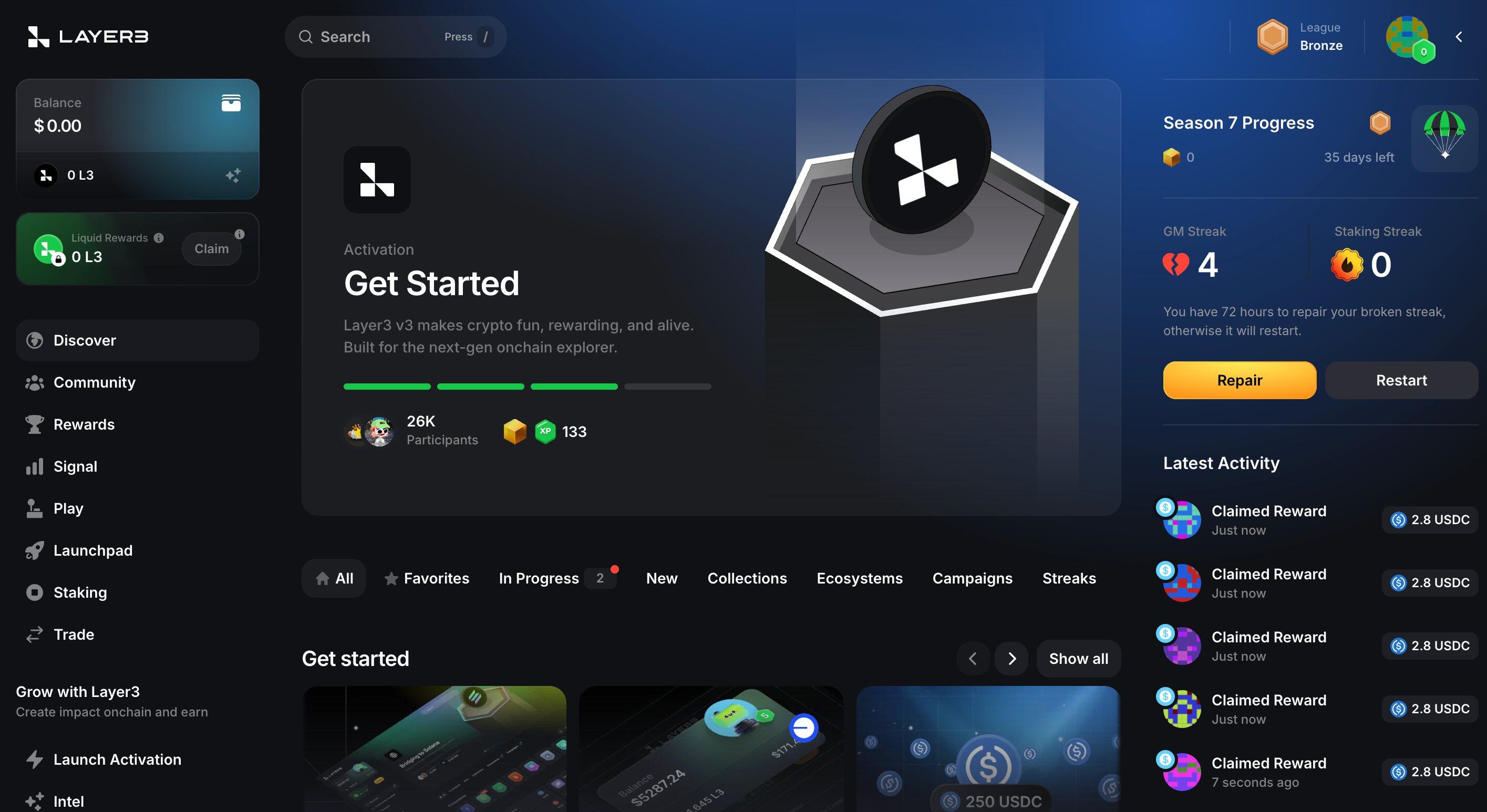
Core Products
- Product Roadmap
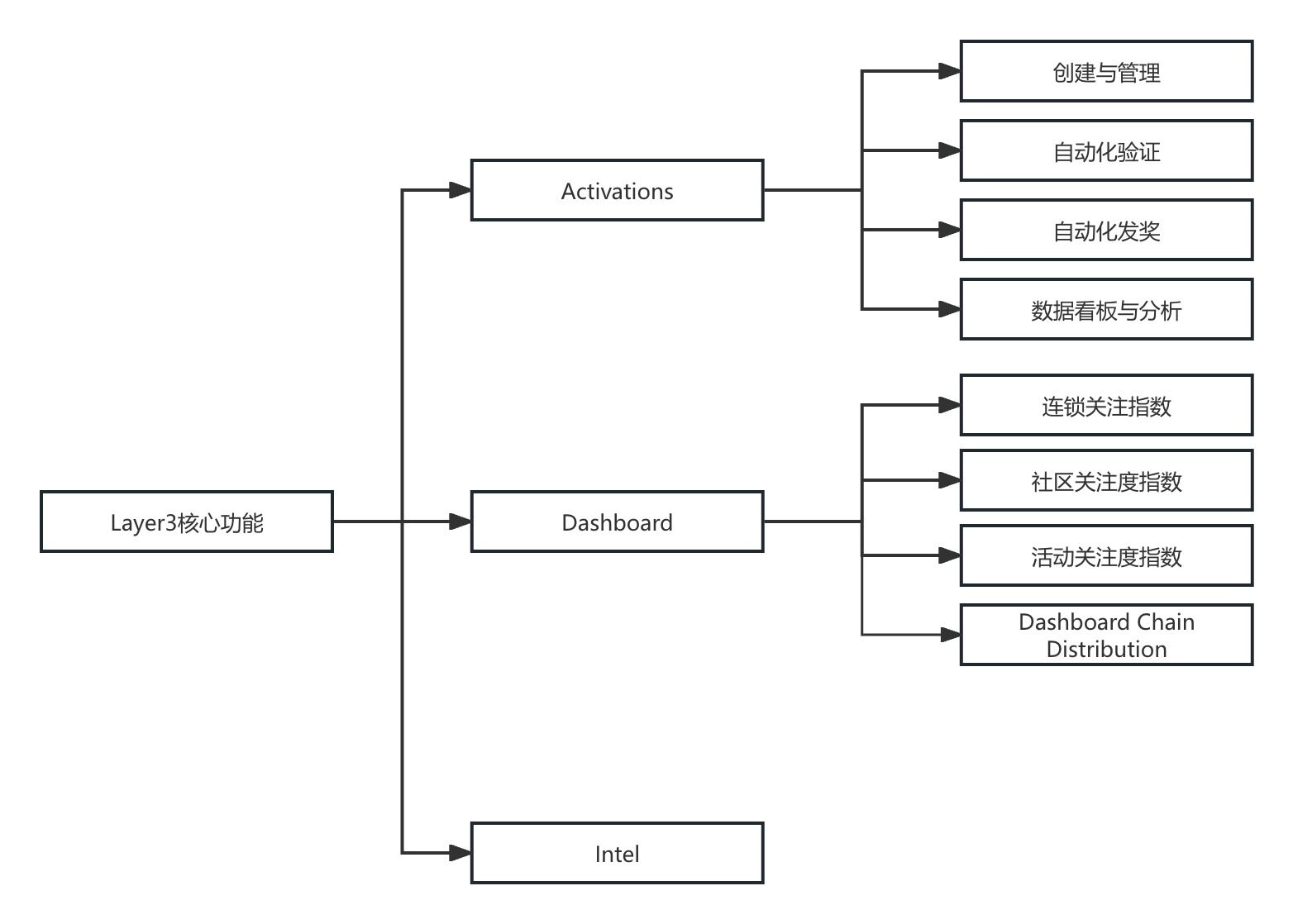
- Product Functions and Use Cases
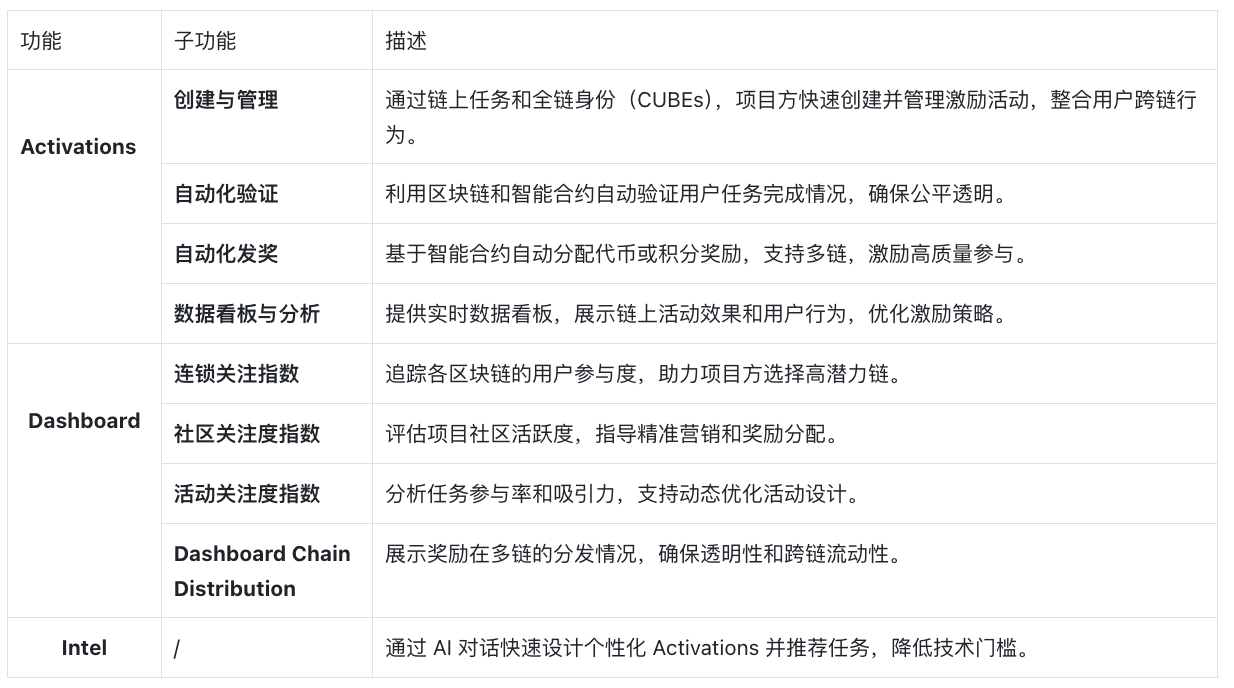
Advantages of Layer 3:
- Focused on on-chain tasks, with a precise and high-quality target customer profile;
- The CUBE credential system can prevent witch attacks;
- Long on-chain task cycles can achieve long-term user growth and on-chain data enhancement;
Disadvantages of Layer 3:
- Usage requires staking L3 tokens, which is relatively costly;
- Insufficient task diversity, leading to low platform retention rates and loyalty;
- Layer 3's reward rules are complex, and the exchange ratio and distribution rules for CUBEs and L3 tokens are not transparent;
- Limited by slow on-chain settlement speeds, some rewards are delayed, affecting user experience;
Zealy: Gamified Task Engine Incentives, Helping Web 3 Projects Enhance Community Activity and Growth
Zealy is a B2B Web 3 task execution platform from Europe that builds modular communities. It sets tasks through text descriptions for user interaction, allowing users to participate in community co-construction and earn a sense of honor. Official zaps are the main rewards.
According to Zealy's official data, it has 6 million users, and reports from Solana Compass indicate that Zealy has around 50,000 daily active users.

Core Products
Zealy's product logic relies on modular communities as the main line, setting task content through text descriptions. The product is convenient and quick but lacks intelligence, making it more suitable for basic social media and community growth.
Zaps are currently the main rewards on the platform, which project parties need to purchase for incentive distribution. Zealy's traffic advantages and simple interaction style, along with a low barrier to entry, closely connect with Discord communities, emphasizing community participation.
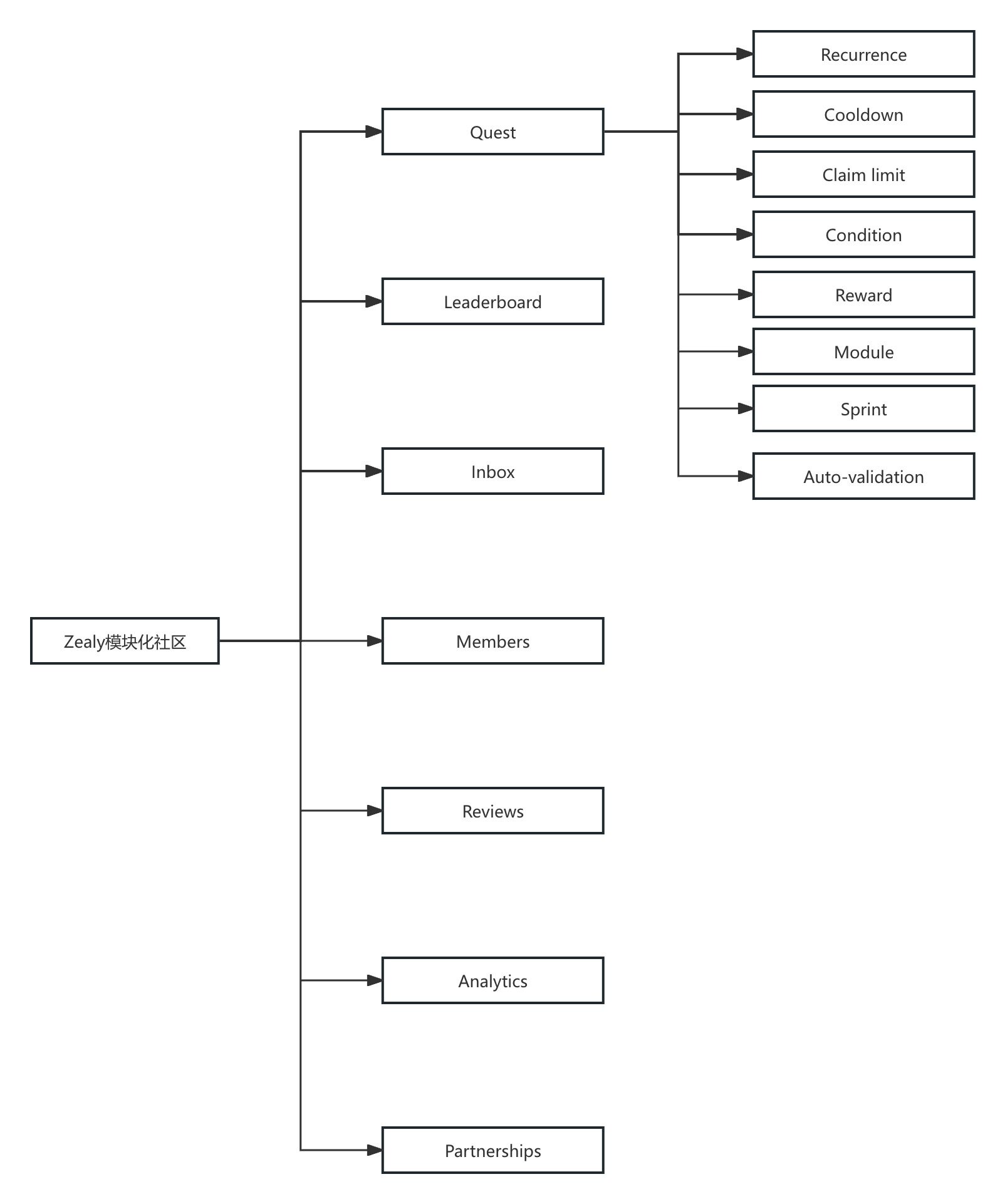
Advantages of Zealy
- B-end products are easy to use and have strong cross-domain adaptability;
- French team, products are more aligned with the usage habits of the European and American markets;
- Deeply link Web 3 tools, providing data analysis dashboards;
Disadvantages of Zealy
- Poor customer acquisition: Lack of on-chain tasks, manual review cycles are too long;
- Task fatigue: Off-chain task types are singular and reward value is low;
- Insufficient intelligence: Tasks can only be described in text, lacking integrated automation tools. Submitting tasks and subsequent review work is cumbersome;
- Lack of automated verification: Task verification almost always requires users to submit POW materials, and the progress of the verification process is blind to both users and project parties;
- Task quantity issues: Cannot set repetitive tasks, leading to a bloated community list without focus;
The Second Half of the Growth Engine Battle: Ecological Game of Task Platforms
After experiencing various task platforms, I found that while most operations are quite similar, the differences in product thinking are significant.
Galxe is the largest task platform and the main battleground for Web 3 in the European and American markets. It has a unique first-mover advantage. However, Galxe is a B2C product, providing a more user-friendly experience on the C-end, with a greater popularity of project quantity and reward scale, but the product's intelligence is somewhat lacking. Galxe chooses to leave the interaction on the smart contract to the project party platform, which inadvertently increases the labor and time costs for project parties, and the costs of using Galxe are not insignificant.
Moreover, I also found that many of Galxe's verifications are pseudo-verifications; as long as the system detects that a user has jumped, it will assume that you have completed the relevant task, which is a very lazy behavior.
The most fragmented user experience is with Zealy. Zealy is easy to use and straightforward, but by setting tasks through text descriptions, it requires project operators to have excellent control over the rules. Additionally, in the later task verification, users need to submit POW for manual verification, placing the task setting, verification, and inquiry responsibilities on the project party.
Layer 3's website is definitely eye-catching, with a card-style page design, minimalist style, and gamified settings that are the most Web 3-styled. Layer 3 focuses solely on on-chain tasks, and in terms of usage costs, after setting up Activation, you can publish tasks by staking 150,000 L3 tokens. Compared to other products, Layer 3 emphasizes getting project parties and users to invest costs into the platform's tokens to activate the token economic model.
TaskOn's experience is surprising; it is the most complex and comprehensive in functionality. TaskOn's Quest can be set up and used for free, and new projects receive a 7-day free membership upon first registration, allowing them to try out some features of GTC. TaskOn integrates an embedded DEX aggregator to complete on-chain interactions in one stop within the site. The interaction experience and after-sales issues are more considerate and worry-free.
For example, in official cooperation consultation feedback, all four platforms have built-in consultation windows. Layer 3 mainly relies on email replies, while Galxe and Zealy have slower internal responses, with only TaskOn providing official instant replies through the Telegram community.
After the Quest is published, each platform can also modify the published content to a certain extent. TaskOn will guide users to communicate officially to confirm the purpose of modifications for effective changes. Zealy, positioned as a B2B platform, also leans towards modification functions for B-end users.
Key Indicator Panorama Comparison of Task Platforms
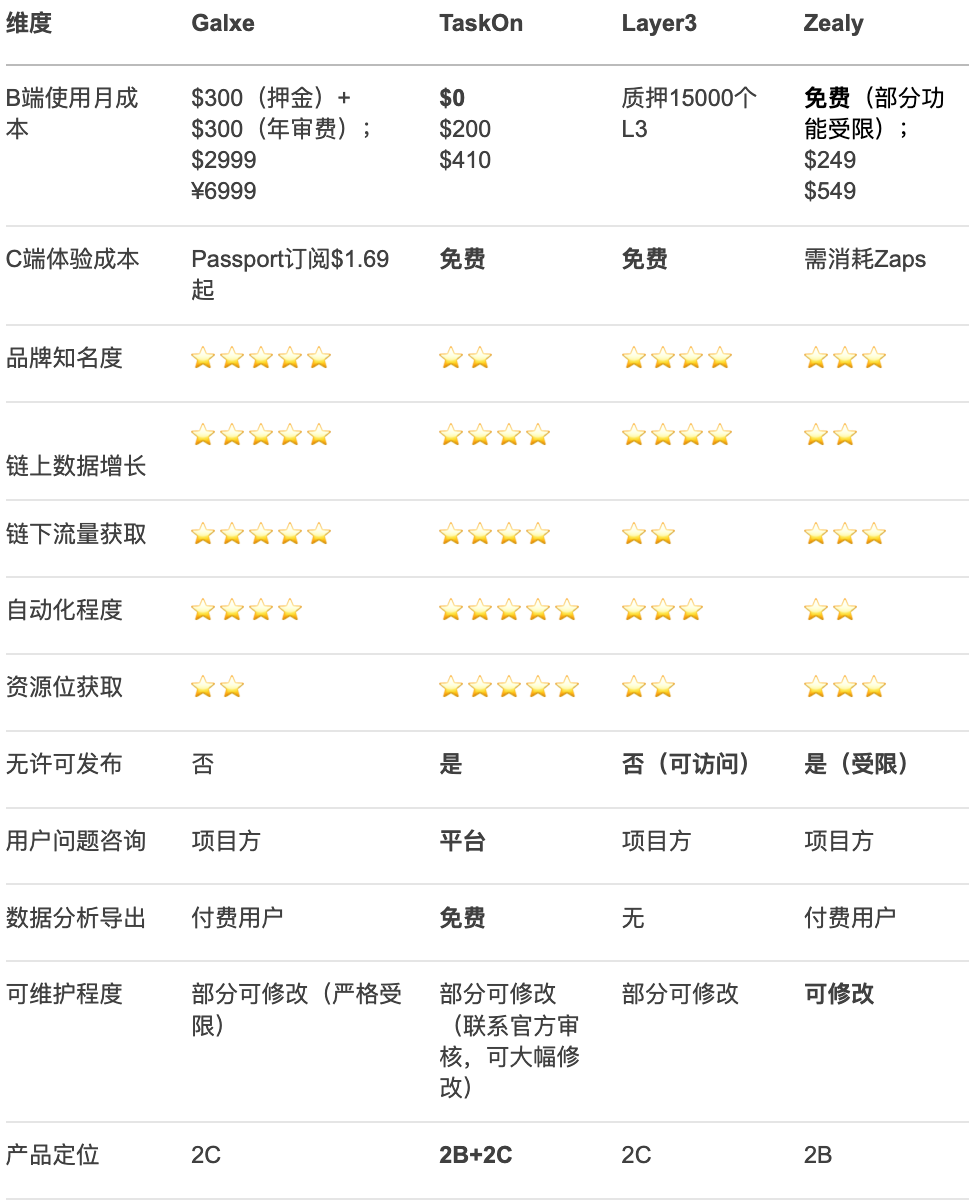
Winning and Losing Analysis
- Low-cost, efficient customer acquisition: TaskOn crushes competitors with zero licensing + full automation, especially suitable for cold-starting small and medium projects;
- High-value user screening: Galxe relies on Starboard data depth, but costs deter long-tail ecosystems, making it suitable for launching large ecosystem projects; Layer 3 and TaskOn focus on on-chain quests, offering better cost-effectiveness;
- Educational scene barriers: Layer 3 has strong narrative capabilities, while Zealy falls into the trap of functional homogenization.
As the growth engine of the Web 3 world, task platforms can become the best bridge connecting users and project ecosystems, driving community growth through gamified tasks and reward mechanisms, and promoting rapid growth in the Web 3 world through multi-chain support, flexibility in on-chain tasks, ecological integration, and deep community interaction. To date, only Galxe, TaskOn, Layer 3, and Zealy remain standing, but in the fierce traffic battle of the second half, whoever can better leverage the value of on-chain data to become the growth flywheel of the ecosystem will survive longer, and the reshuffling of the landscape is likely on the way.
免责声明:本文章仅代表作者个人观点,不代表本平台的立场和观点。本文章仅供信息分享,不构成对任何人的任何投资建议。用户与作者之间的任何争议,与本平台无关。如网页中刊载的文章或图片涉及侵权,请提供相关的权利证明和身份证明发送邮件到support@aicoin.com,本平台相关工作人员将会进行核查。




